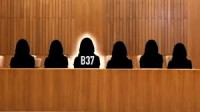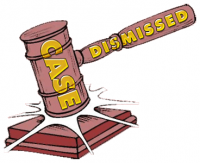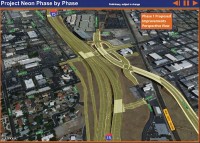
Sanders v. Sears-Page (Nev. Ct. App. – July 16, 2015)
When a juror is biased against a party, that juror must be struck from the jury. The issue is whether the district court erred in declining to strike an empaneled juror whose background experience implied bias, but who asserted he could be impartial.
This case arises from a jury trial on a personal injury claim for damages following a 2009 car accident. Sears-Page made a right turn from a left-hand lane and hit Toni Sanders’ car. Initially, the accident appeared minor as neither party claimed injuries at the scene. A few days later, Sanders purportedly began experiencing neck pain that worsened over time. Sanders and her husband, Robert, sued Sears-Page for negligence to recover damages, including medical expenses. Sears-Page admitted liability but denied causation and damages.
Sanders’ injuries
The central issues at trial involved whether the accident had caused or contributed to Sanders’ injury and, if so, whether Sanders’ claimed medical expenses were reasonable. Sanders, who had chronic back pain, had previously experienced neck pain in 2004 from a bone spur. But, she denied having neck pain in the years immediately preceding the accident, and two of her treating physicians testified the accident with Sears-Page caused Sanders’ 2009 neck pain. Both doctors also testified Sanders’ medical procedures and surgeries following the accident to alleviate pain were reasonably necessary.
To support her claimed damages, Sanders presented medical records and bills from Nevada Spine Clinic. Those records were generated primarily by treatment from Doctors Grover, Ghuman, and Rosler, but many records were generated by other doctors and medical professionals at Nevada Spine Clinic. Of the people who treated Sanders at Nevada Spine Clinic, only Dr. Grover testified at trial. Dr. Grover was one of several doctors at that clinic who treated Sanders for chronic back pain before the 2009 accident and also treated her for neck pain after the accident, and testified all of Sanders’ medical bills from Nevada Spine Clinic were reasonable.
Sears-Page denied Sanders’ injuries occurred as a result of the automobile accident. Instead, Sears-Page asserted Sanders’ symptoms arose from a preexisting degenerative medical condition. In opening statements, Sears-Page emphasized that Dr. Grover sold Sanders spine surgery and the doctors at Nevada Spine Clinic encouraged unnecessary surgery and medical procedures for their own financial gain. Sears-Page argued she should not have to pay for Sanders’ unnecessary medical expenses, which were purposely inflated by Nevada Spine Clinic.
During trial, Sears-Page’s retained medical experts, Dr. Schifini and Dr. Duke, both testified Sanders’ medical records showed a preexisting degenerative condition that developed over the course of several years, and her post-accident medical records were devoid of trauma to her neck. Both experts opined the accident did not cause Sanders’ medical condition or contribute to her current neck pain. Dr. Duke further noted Sanders’ medical history prior to the accident included treatment for neck pain in 2004 and 2009, which supported his opinion that Sanders’ degenerative condition alone caused her current neck pain.
Both experts testified Sanders’ surgery and medical procedures performed by Nevada Spine Clinic doctors were unnecessary and unreasonable. Further, they emphasized the clinic doctors’ fees were significantly higher than average doctor’s fees. Sears-Page argued Nevada Spine Clinic’s physicians’ practice of referring patients like Sanders to medical facilities owned by the physicians not only benefited the physicians financially, but also inflated Sanders’ medical bills.









